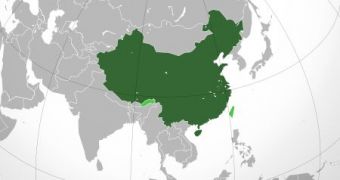The US Library of Congress, in Washington DC, currently displays a very old map, created by an Italian more than 400 years ago, and depicting China as the middle of the world. The artifact is incredibly valuable for our understanding of the geopolitics of the time. It also yields a clearer insight into the way the Asian nation was organized at the time, experts say. The map itself is extremely fragile, having been printed on rice paper, so it is handled with extreme care, so as not to damage it.
According to the BBC News, the document was created by Italian missionary Matteo Ricci, in 1602 AD. Its frailty and construction have earned it the name of “Impossible Black Tulip of Cartography,” which it has retained to this day. The missionary did not create the map out of initiative, but at the express request of the Emperor Wanli. The leader wanted to have a map that he could show to scholars and explorers, to help them in their quest of meeting new cultures across Asia. Now, for the first time ever, the precious artifact is on display in North America.
The map was purchased recently (October 2009) by the James Ford Bell Trust, for a sum that made it the second most valuable such artifact in history – $1 million. What makes it incredibly valuable is the fact that it features pictures and annotations of the various regions of the world that have been included in it, according to the knowledge available at the time of how the Earth was organized and divided. It features an early map of the Americas as well, including countries such as Chile, Guatemala, Canada, and the state of Florida. Each of them is named according to Chinese tradition. Chile is Chih-Li, Canada is Ka-na-ta, Florida is the Land of the Flowers, and Guatemala is Wa-ti-ma-la, the British news agency informs.
“Ricci was a very smart missionary. He put China right at the center of this new universe, this new globe, to underscore its importance. Ricci, of course, was the first Westerner to enter Beijing. He was revered by the Chinese, and he was buried there,” James Ford Bell Trust trustee Ford W. Bell told the Pittsburgh Tribune-Review. He also added for the same publication that the map the Trust purchased was one of the best two available, as far as its condition went. Ti Ban Zhang, the first secretary on cultural affairs at the Chinese embassy in Washington DC, said that the map being displayed at the Library of Congress marked “the momentous first meeting of East and West.”

 14 DAY TRIAL //
14 DAY TRIAL //